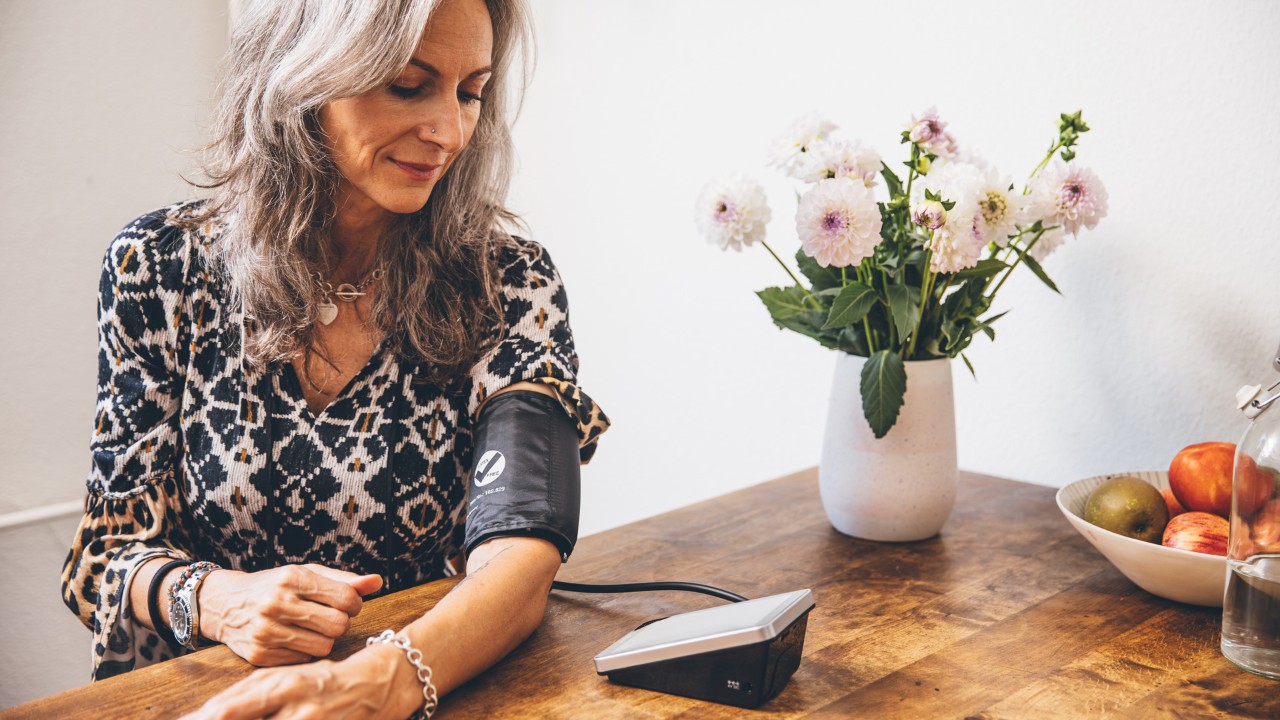Heart attacks: symptoms in women
Women's hearts tick differently - at least physiologically. Until the menopause, heart attacks are rarer but more fatal than in men because the symptoms are often misinterpreted.

A twinge in the chest, radiating pain in the left arm: this is what a classic heart attack looks like – in men. However, less is known about the effects of a heart attack on women. Heart disease is roughly as common in women as in men. Heart attacks are even their main cause of death in our part of the world, not – as one might assume – breast cancer,” says cardiologist Belinda Nazan Walpoth, who heads the special consultation “Women and Heart” at the Inselspital university hospital in Bern.
She notices that women very rarely think it is possible to have heart disease. The possibility doesn’t even seem to have occurred in the minds of some medical professionals. The Sanitas Health Forecast 2020 paints the same picture: a quarter of men are interested in improving their cardiovascular stability – compared to only 16% of women.
As a prime example, Nazan Walpoth tells of a woman in her fifties, slightly overweight with elevated cholesterol levels: “She reported to her GP in the middle of the cold season, complaining of tiredness and abdominal pain and of being too exhausted to lift her arms. She was advised on the phone to just rest because she didn’t have a fever and to call back if it got worse. Two hours later, the woman arrived at the practice completely exhausted. It turned out she’d had a heart attack! The woman was sent straight to hospital, where the blocked blood vessel was opened. I saw her three months later for a follow-up. She told me she’d never expected to have a heart attack.”
Symptoms: what are the signs of heart disease in women?
A big problem is that women’s symptoms are not always identified as heart disease right away. After all, in an emergency, it’s the first hour that counts: “You need to open up the closed vessel very quickly to prevent tissue loss,” says the heart specialist.
If women don’t have the “classic” signs, such as a twinge in the chest or radiating pain in the left arm, they often downplay or misinterpret their symptoms. Caution is advised, for example, if a woman experiences sudden fatigue, sleep disturbances, shortness of breath and indigestion, numbness in the arms and/or pain in the back or legs.
These symptoms may initially sound harmless, but they can herald a heart attack days or weeks in advance. Too often they are put down to a cold, muscle pain, the menopause or stress. But who goes to the doctor with tiredness or stomach ache? “I advise women with abdominal pain, sudden shortness of breath and fatigue to go to hospital once too often, especially if they have diabetes or metabolic syndrome, i.e. high cholesterol, too much weight, high blood pressure or borderline sugar levels,” says the cardiologist.
When women suffer a heart attack, they usually present different symptoms than men:
- Shortness of breath
- Unexplained nausea and vomiting
- Pressure in the chest, back or (upper) abdomen
- Jaw and throat pain
- Fatigue
But the “classic” symptoms can also occur. According to the Swiss Heart Foundation, these include:
- Severe pressure and tight, constricting or burning pain in the chest (lasting longer than 15 minutes), often associated with shortness of breath and fear of death.
- sometimes Sometimes (!) pain radiating throughout the chest, towards both shoulders, arms, neck, lower jaw or upper abdomen.
- Possible accompanying symptoms are a pale, sallow complexion, nausea, weakness, sweating, shortness of breath or an irregular pulse. The pain is felt regardless of body movements or breathing and does not disappear even after taking the drug nitroglycerin.
“Heart disease is roughly as common in women as in men.”
Risk factors for heart disease in women
Whereas men are more likely to have a heart attack from the age of 50, the risk of cardiovascular disease in women does not increase until around ten years later. This goes some way to explaining the higher mortality rate for women after a heart attack even with the same treatment: the risk of a fatal outcome increases with age. It’s believed that female hormones initially provide biological protection but that this starts to wear off after the menopause.
“I advise women to have their risk profile assessed by their family doctor at the latest once the menopause sets in: Cholesterol? Blood sugar? Blood pressure? Weight? Nicotine? Family history? Ideally, they should go even earlier. If you belong to a risk group and have symptoms, you should get checked out by a cardiologist straight away,” says Nazan Walpoth.
The typical risk factors are the same for men and women: high blood pressure, elevated blood fat levels, stress, obesity, diabetes and smoking are harmful to all hearts. However, many factors have a bigger impact on the female body:
For example, the risk of heart disease is much higher in women with diabetes than in men. And women’s hearts seems to react worse to cigarette smoke: the risk of suffering a heart attack is 25% higher in female smokers than in male smokers. If the smoker is also taking birth control pills, this also increases the probability of blood clots. Constant stress and depression also damage women’s hearts more than men’s. As do even small amounts of alcohol.
A number of other risk factors are unique to the female body, such as unusually early menstruation (under the age of 10), the early onset of menopause, and pregnancy complications such as pre-eclampsia and eclampsia. “Women today often struggle to juggle family and work,” says Dr Nazan Walpoth. “And we know that stress is a big risk factor for women.”
Prevention and treatment: what helps the heart?
The classic characteristics of a healthy lifestyle are also good for the heart: a balanced diet, regular exercise, low stress, an ideal body weight and abstaining from smoking and excessive alcohol. It’s also a good idea to get your blood pressure, cholesterol and blood sugar checked regularly. The most important tip is to tackle risk factors preventively. And then: have check-ups and – if medication is necessary – take it.
For a long time, women were given the same treatment as small men. However, it’s not only the lower body weight that means women respond differently than men to many medicines. Their blood vessels are also different. "Gender medicine enables us to address and raise awareness of women-specific aspects in the prevention, diagnosis and treatment of cardiovascular diseases,” says Dr Nazan Walpoth. “The awareness that women’s hearts beat differently and need different treatment is absolutely vital.”
- The heart is a muscle about the size of a fist, weighing around 250 grammes in women and 300 grammes in men.
- Around 30,000 people in Switzerland suffer an acute coronary event (heart attack and/or angina pectoris) every year.
- Heart attacks are the number one cause of death worldwide.
- Four out of five cardiac emergencies occur outside the hospital.
- Heart attack victims are admitted to hospital with an average delay of three hours from the onset of symptoms.
- Women suffer from cardiac insufficiency, i.e. heart failure, more often than men. Persistent fatigue and swollen ankles are often attributed to age, but can also be a sign of the disease.


